
Any Image v.5.2
Image File Format Batch Converter
DOWNLOAD
Try the free shareware.
BUY IT!
Buy the full version for €20 / $22.
Runs under: Windows 11 / 10 / 8 / 7 / Vista.
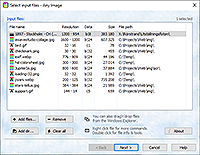
Step 1 — Select input
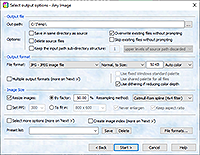
Step 2 — Select options
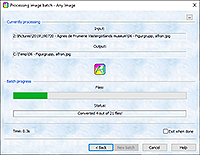
Step 3 — Convert files
Any Image is a tool for doing high quality image file conversions.
- Converts large batches of image files just as easily as a single file.
- Supports many different image file formats.
- Supports several types of text metadata (native formats, EXIF, IPTC IMM, Adobe XMP, …)
- Unicode is supported for file names as well as many forms of text metadata.
- True support for deep color and HDR image formats (16-bit integer and 32-bit floating point data/color component).
- High quality Floyd-Steinberg dithering available when converting to lower bit-depths - greatly enhances the subjective image quality.
- High quality image processing options (e.g. image resizing, framing, un-dithering, sharpness, saturation, contrast, gamma, rotation, mirroring).
- High quality color palette optimization when writing palette-indexed images (2, 4, 8, 16, 32, 64, 128 or 256 colors).
- Alpha plane, transparency color, and text fields are converted for all formats that support it.
- Unique option to compress JPEGs to a target file size as an alternative to the usual 'quality' parameter.
- Optimal compression of PGN files with a 'Super optimize' option.
- Options useful for web or game graphics, e.g. "Set alpha plane from second file" and "Use optimal shared palette for all files".
- Automatically create HTML image tables for image galleries or thumbnail indexes.
- Write to multiple output formats in a single batch run.
- Command line interface for doing unattended conversions.
- Native x64 (64-bit) and x86 (32-bit) versions are available.
Screenshots
Batch conversion of image files in 3 steps:
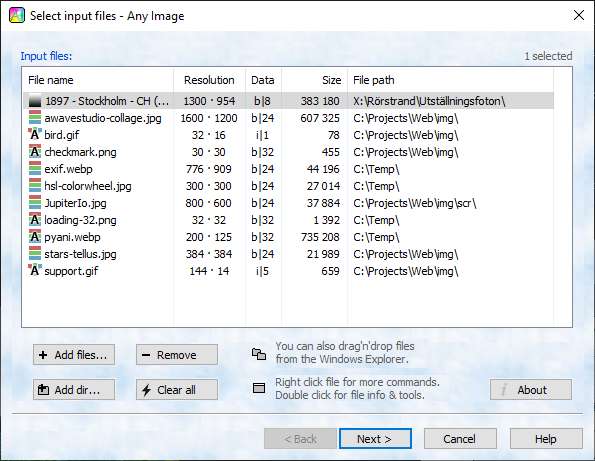
Any Image — Step 1: Select input files
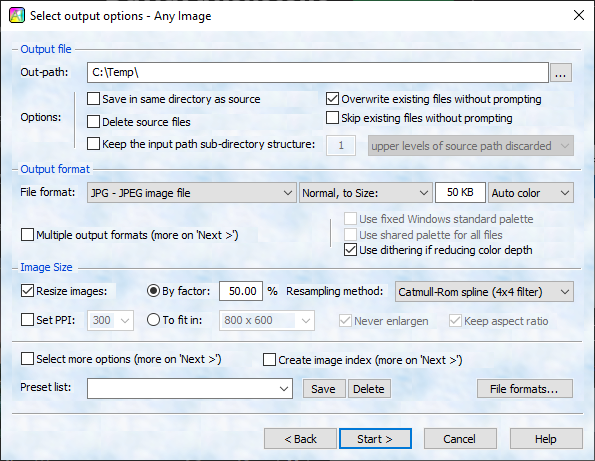
Any Image — Step 2: Select options
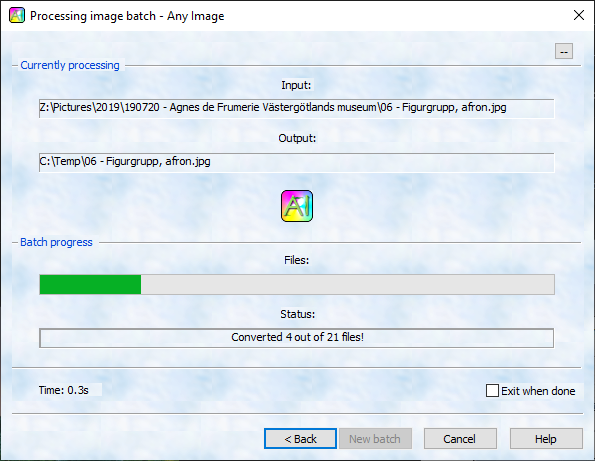
Any Image — Step 3: Convert the files
Optional additional steps:
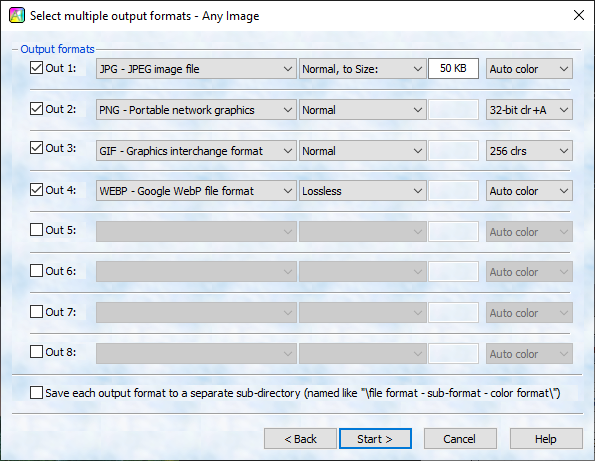
Any Image — Step 2.1 (optional): Select multiple output formats
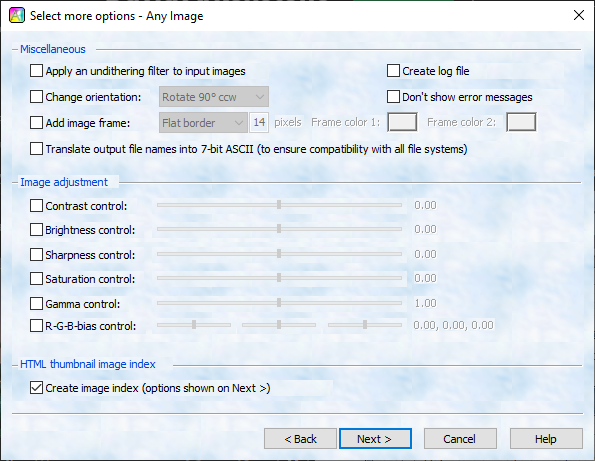
Any Image — Step 2.2 (optional): Select more options

Any Image — Step 2.3 (optional): Select index options
Any Image is commercial software marketed as Shareware.
This means that can to "try it before you buy it".
If you find that you like it and wish to continue using it past the 30 day free trial period, then you need to buy a license.
More benefits of buying it:
- Removes the "nag screen" and annoying reminders.
- Removes the "one file per batch" limit.
Buy it on-line here:
All payments are handled by PayPal.
Most credit cards are accepted.
You do not need a PayPal account.
EU-customers: VAT will be added to the price.
License and delivery terms:
What happens next?
After we have received your order, you will be sent an email containing a registration code – a license key that unlocks the trial version into the full version.
Please note that the code is normally sent within 24 hours, but not immediately (also, do check your "spam" or "junk" folders if you don't find it in your in-box).
How may I use it?
What you buy is a "single user" license to use the software.
You are allowed to install it on more than one computer, but you are not allowed to lend its use it to anyone else.
The license is personal and issued in your name - it can not be transferred or resold.
What is your upgrade policy?
We have a policy of minimum 1 year of free upgrades, meaning that any new major version that may be released within a year from the purchase date, will be free to you. After that period, there may be an update fee. We also have a policy of free minor version updates if you own the same major version, regardless of the time that has passed.
Thank you for your order!
If everything went fine with the PayPal transaction, an email containing your reg-code and further instructions should arrive within the next 48 hours.
Please be patient, orders are manually verified before delivery. If you don't see an email, be sure to check you junk-mail folder before contacting support.








